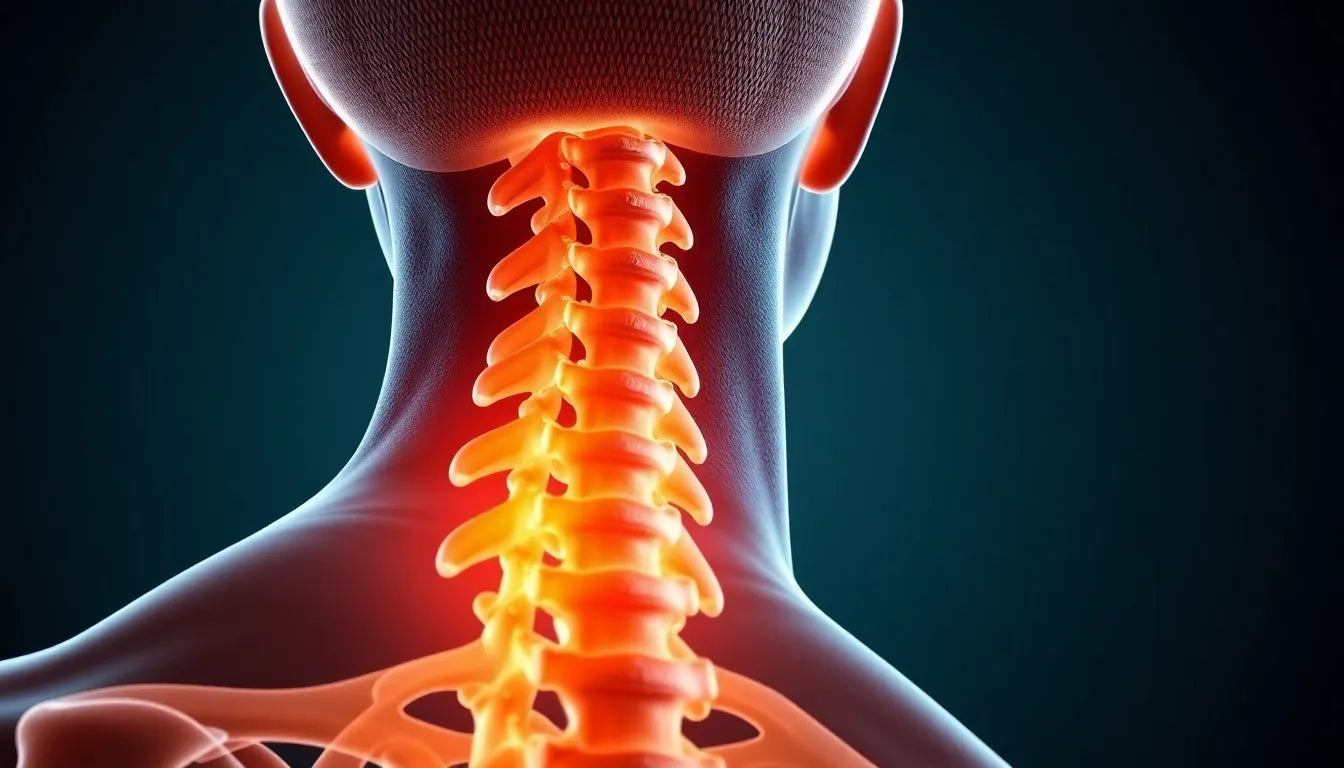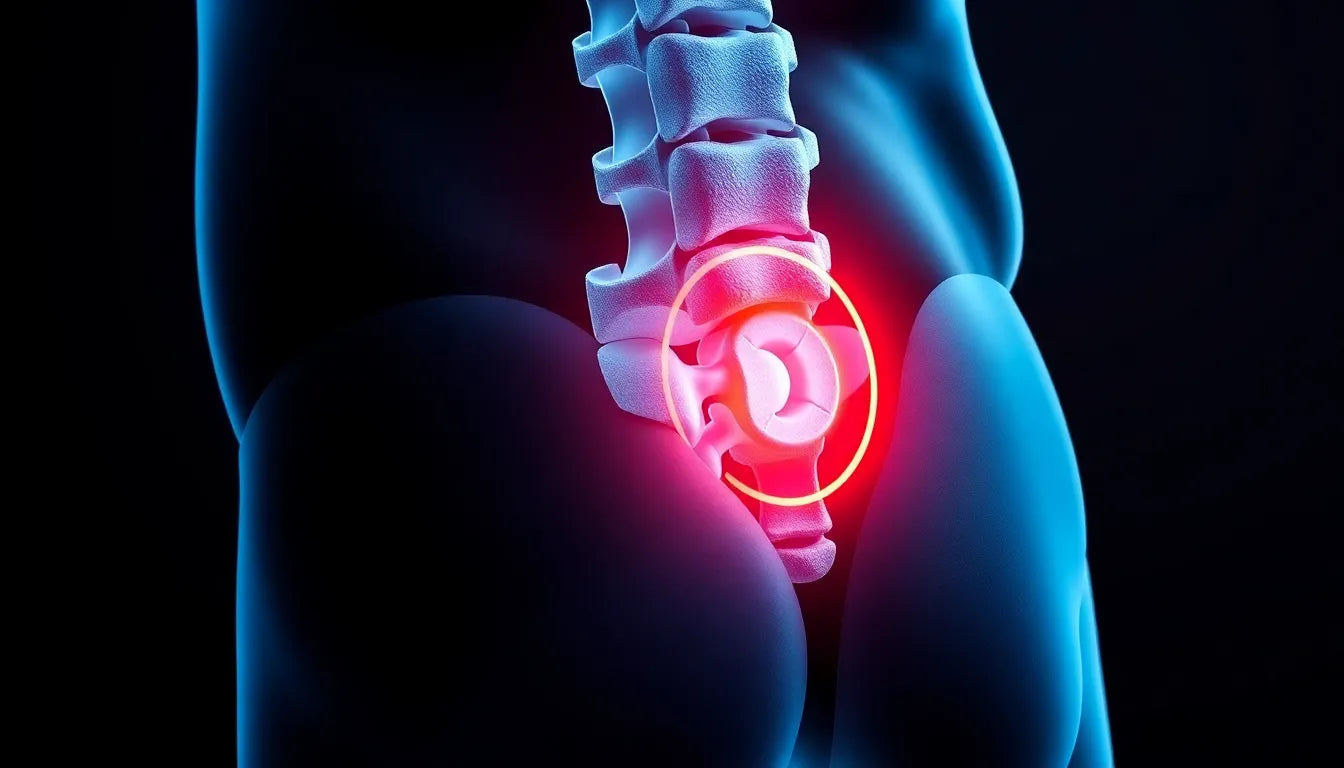Understanding the complexities of a herniated disc is crucial for anyone experiencing the discomfort and pain it can cause. A herniated disc, often referred to as a slipped or ruptured disc, occurs when the soft cushion of tissue between the bones in your spine pushes out. This condition can result from wear and tear over time, heavy lifting, or sudden strain. Common symptoms include back pain, leg pain, numbness, or weakness, which can significantly impact daily life.
Recognizing these symptoms is the first step towards effective treatment and healing. The key to managing a herniated disc lies in understanding the available treatment options, which can vary widely depending on the severity of the condition and individual health factors.
The journey to recovery
Embarking on the path to recovery from a herniated disc involves crafting a personalized treatment plan that caters to your specific needs and lifestyle. This individualized approach is essential because what works for one person might not be suitable for another. The two primary paths for treatment are surgical and nonsurgical options, each with its own set of techniques and methodologies.
For some, nonsurgical treatments, such as physical therapy and pain management, may provide sufficient relief and healing. These methods focus on strengthening the muscles surrounding the spine, improving flexibility, and managing pain through medications or alternative therapies. On the other hand, surgical interventions might be necessary for those with more severe cases, where the disc is causing significant nerve damage or when nonsurgical methods fail to alleviate symptoms.
This blog post aims to serve as a comprehensive guide on how to repair a herniated disc, offering insights into the various treatment strategies available. Whether you're exploring nonsurgical options or considering surgery, understanding the full spectrum of treatments can empower you to make informed decisions about your health and well-being.
Exploring nonsurgical treatment options for herniated discs
When it comes to repairing a herniated disc, many individuals initially opt for nonsurgical treatments, which can be highly effective in alleviating pain and promoting healing. One of the cornerstone approaches is physical therapy. This involves a series of exercises specifically designed to strengthen the muscles supporting the spine and enhance flexibility. Physical therapists play a crucial role in guiding patients through tailored exercise regimens, ensuring that each movement is performed correctly to avoid further injury.
Another critical aspect of nonsurgical treatment is pain management. This often involves the use of medications such as nonsteroidal anti-inflammatory drugs (NSAIDs) and muscle relaxants to reduce pain and inflammation. Additionally, hot and cold therapy can be employed to soothe sore areas and decrease swelling, providing much-needed relief.
For those seeking alternative therapies, acupuncture and chiropractic care have gained popularity. Acupuncture, an ancient practice, involves inserting thin needles into specific points on the body to stimulate healing and pain relief. Chiropractic care, on the other hand, focuses on spinal adjustments and manipulations to improve alignment and relieve pressure on the nerves. Both methods have shown potential benefits, although outcomes can vary based on individual cases.
Surgical treatment options for herniated discs
In cases where nonsurgical treatments do not provide sufficient relief, surgical intervention may be necessary. One of the most common procedures is microdiscectomy. This minimally invasive surgery involves removing the portion of the disc that is pressing on the nerve, which often leads to immediate pain relief. Recommended when nerve compression causes significant pain or weakness, microdiscectomy typically boasts a relatively quick recovery period, although, as with any surgery, there are potential risks such as infection or nerve damage.
Another surgical approach includes laminotomy and laminectomy. Both procedures involve removing part of the vertebra to relieve pressure on the spinal cord or nerves. The main difference lies in the extent of bone removal, with laminectomy involving a more extensive process. These surgeries are generally recommended when there is significant spinal stenosis or nerve compression, and they require a more extended recovery period compared to microdiscectomy.
For more severe cases, spinal fusion and artificial disc replacement might be considered. Spinal fusion involves permanently connecting two or more vertebrae to stabilize the spine, which can limit mobility but often results in significant pain reduction. Conversely, artificial disc replacement aims to maintain motion in the spine by replacing the damaged disc with a synthetic one. Both procedures have their own set of long-term outcomes and considerations, and the choice between them depends on various factors, including the patient's age, activity level, and overall health.
Utilizing visual aids and resources
Understanding the intricate details of herniated disc treatments can be challenging, which is why visual aids can be incredibly beneficial. Educational videos that demonstrate surgical procedures, such as those available on medical websites, can provide valuable insights into what patients can expect during and after surgery. Additionally, diagrams or infographics that illustrate the anatomy of the spine and the mechanics of herniated discs can help visual learners grasp complex concepts more easily.
In conclusion, whether opting for nonsurgical methods or considering surgical options, being well-informed about the various treatment paths is crucial. Each approach offers different benefits and challenges, and consulting with healthcare professionals can aid in making the best decision for one's health and lifestyle. By exploring all available resources and understanding the potential outcomes, individuals can embark on a more confident journey toward healing and recovery.
Recovery and long-term care for herniated disc treatment
Embarking on the recovery journey after herniated disc treatment, whether surgical or nonsurgical, is a crucial phase that demands attention and care. For those who undergo surgery, post-surgery care is essential to ensure a smooth recovery and minimize complications. Immediately after surgery, patients can expect to be monitored closely, often requiring a short hospital stay. During this time, managing pain and preventing infection are top priorities. Patients are typically encouraged to start moving as soon as possible, with guidance from healthcare professionals, to promote healing and prevent stiffness.
As the initial recovery phase progresses, adhering to a structured plan is vital. This includes attending all follow-up appointments and gradually increasing physical activity levels under professional supervision. Patients are often advised to avoid heavy lifting and strenuous activities until cleared by their healthcare provider. Engaging in prescribed physical therapy sessions can significantly aid in regaining strength and flexibility, ultimately enhancing the overall recovery process.
For long-term recovery, the timeline for returning to daily activities and work varies depending on the individual and the specific treatment received. Most patients can resume light activities within a few weeks, with a full return to normal activities typically expected within a few months. However, maintaining an ongoing commitment to physical therapy and following medical advice is crucial for achieving the best outcomes and preventing future issues.
Addressing risks and success rates
Addressing common concerns about risks and complications is an integral part of the decision-making process for herniated disc treatment. While surgical options can provide significant relief, they also come with potential risks, such as infection, nerve damage, or adverse reactions to anesthesia. Discussing these risks with a healthcare provider is essential to understanding the likelihood of complications and how they can be managed effectively.
On the positive side, the success rates for herniated disc surgeries are generally high, with many patients experiencing substantial pain relief and improved quality of life. Factors influencing recovery and outcomes include the patient's overall health, adherence to post-treatment guidelines, and the severity of the initial condition. By being informed and proactive, individuals can optimize their recovery journey and enhance their prognosis.
Frequently Asked Questions
What is the recovery time for herniated disc surgery?
Recovery time for herniated disc surgery varies depending on the procedure and individual factors. Generally, patients can expect to resume light activities within 1-3 weeks and full activities within 4-6 weeks. However, complete recovery may take several months, and adherence to rehabilitation protocols is crucial for optimal outcomes.
What are the risks of herniated disc surgery?
Common risks associated with herniated disc surgery include infection, nerve damage, blood clots, and anesthesia-related complications. While these risks are relatively low, discussing them with your healthcare provider can help you understand how they are managed and minimized during the surgical process.
Can a herniated disc heal without surgery?
Yes, many cases of herniated discs can heal without surgery through nonsurgical treatments such as physical therapy, pain management, and alternative therapies like acupuncture or chiropractic care. These methods focus on relieving pain, reducing inflammation, and promoting natural healing.
How can I prevent future herniated discs?
Preventing future herniated discs involves maintaining good spinal health through regular exercise, proper lifting techniques, and maintaining a healthy weight. Strengthening core muscles, practicing good posture, and avoiding prolonged sitting or repetitive strain can also help reduce the risk of recurrence.


















